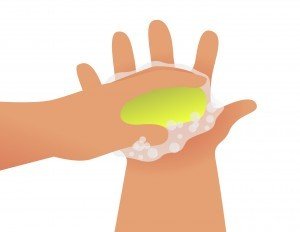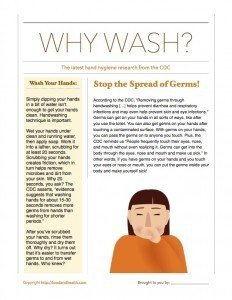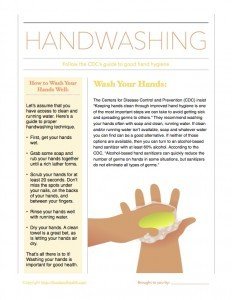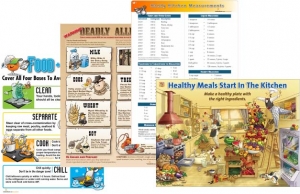Get Ready for Handwashing Week!
 Did you know that National Handwashing Week runs from December 6th through the 12th? Now is the perfect time to prepare. How will you teach your clients about proper hand hygiene?The Centers for Disease Control and Prevention (CDC) insist "Keeping hands clean through improved hand hygiene is one of the most important steps we can take to avoid getting sick and spreading germs to others." They recommend washing your hands often with soap and clean, running water. If clean and/or running water isn't available, soap and whatever water you can find is a good alternative. If neither of those options are available, then you can turn to an alcohol-based hand sanitizer with at least 60% alcohol.Let's assume that you have access to clean and running water. Here's a guide to proper handwashing technique.
Did you know that National Handwashing Week runs from December 6th through the 12th? Now is the perfect time to prepare. How will you teach your clients about proper hand hygiene?The Centers for Disease Control and Prevention (CDC) insist "Keeping hands clean through improved hand hygiene is one of the most important steps we can take to avoid getting sick and spreading germs to others." They recommend washing your hands often with soap and clean, running water. If clean and/or running water isn't available, soap and whatever water you can find is a good alternative. If neither of those options are available, then you can turn to an alcohol-based hand sanitizer with at least 60% alcohol.Let's assume that you have access to clean and running water. Here's a guide to proper handwashing technique.
- First, get your hands wet.
- Grab some soap and rub your hands together until a rich lather forms.
- Scrub your hands for at least 20 seconds. Don't miss the spots under your nails, on the backs of your hands, and between your fingers.
- Rinse your hands well with running water.
- Dry your hands. A clean towel is a great bet, as is letting your hands air dry.
Quick Tip: Want to make sure you wash your hands for the full 20 seconds without having to count? Just sing the happy birthday song to yourself twice -- it takes the same amount of time. Now that we've talked about how to wash your hands, let's discuss when you should do it. The CDC has a comprehensive list, which includes...
Now that we've talked about how to wash your hands, let's discuss when you should do it. The CDC has a comprehensive list, which includes...
- Before, during, and after preparing food
- Before and after treating a cut or wound
- Before and after taking care of someone who is sick
- Before you eat
- After feeding your pet or giving it treats
- After touching an animal or animal waste
- After using the bathroom
- After helping someone else use the bathroom (or changing diapers)
- After blowing your nose
- After coughing or sneezing
- After touching garbage
A note from the CDC about hand sanitizers: "Washing hands with soap and water is the best way to reduce the number of germs on them in most situations. If soap and water are not available, use an alcohol-based hand sanitizer that contains at least 60% alcohol. Alcohol-based hand sanitizers can quickly reduce the number of germs on hands in some situations, but sanitizers do not eliminate all types of germs."There you have it -- the whens and hows of handwashing. To see the whys of handwashing, drop by the members-only post The CDC and the Science Behind Handwashing. Of course, I would never leave you without a free handout! Here's a guide to washing your hands, just in time for National Handwashing Week!
Of course, I would never leave you without a free handout! Here's a guide to washing your hands, just in time for National Handwashing Week! And, as always, there's lots more in the Nutrition Education Store. Remember, we're here to help you look your very best, right now.
And, as always, there's lots more in the Nutrition Education Store. Remember, we're here to help you look your very best, right now.


